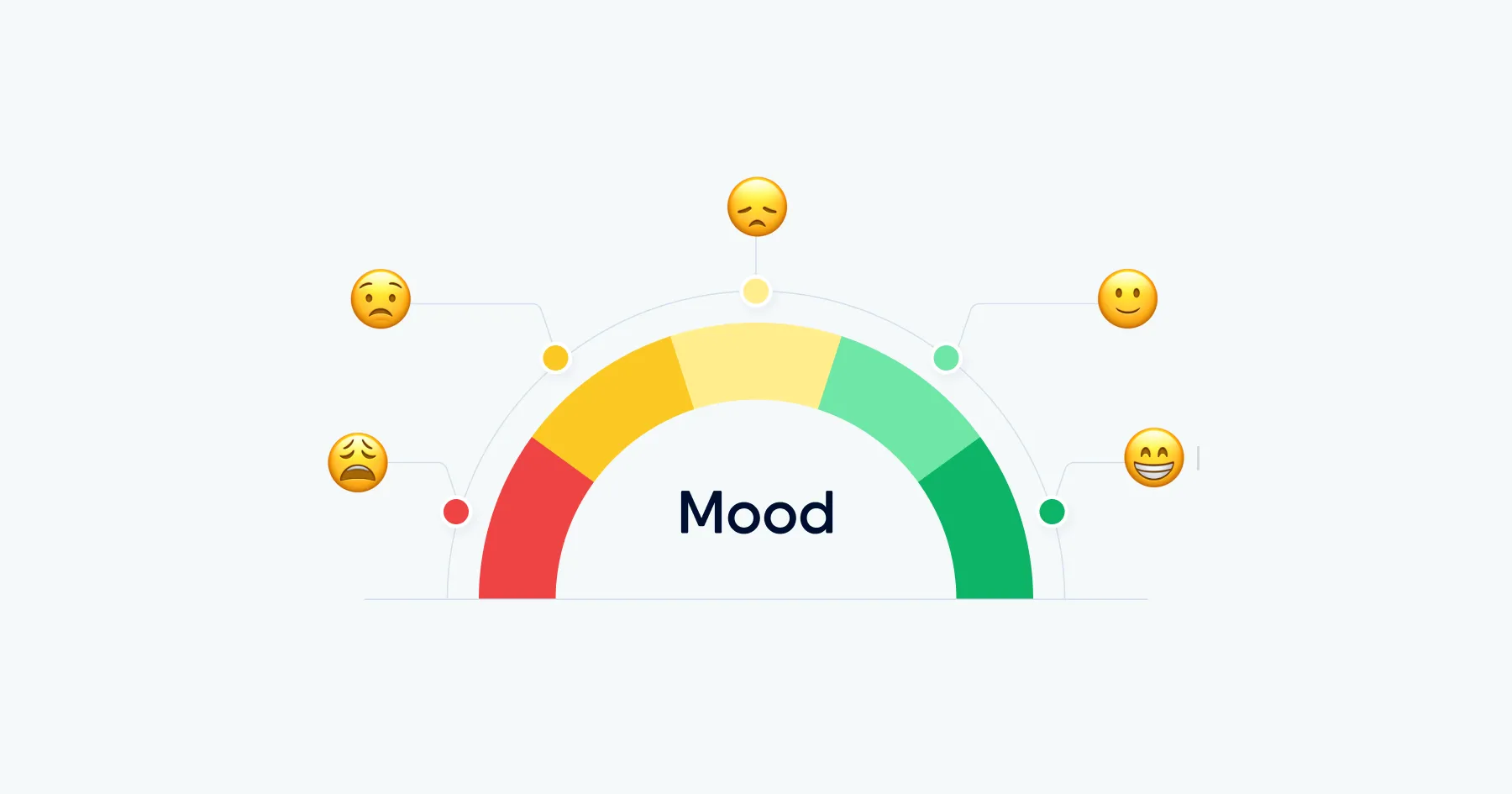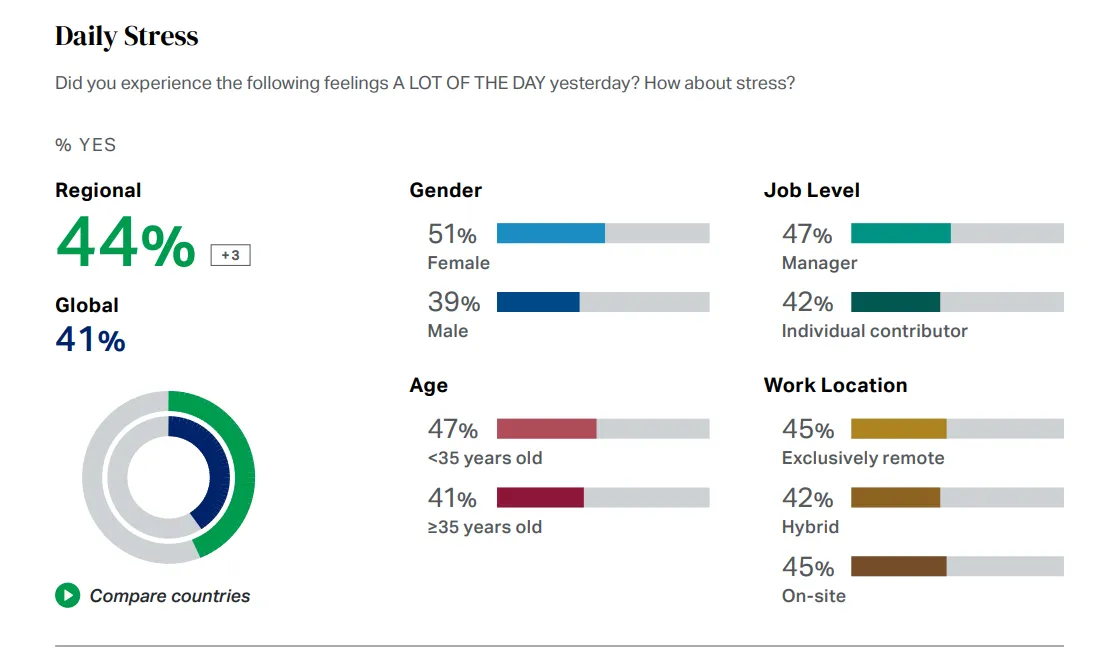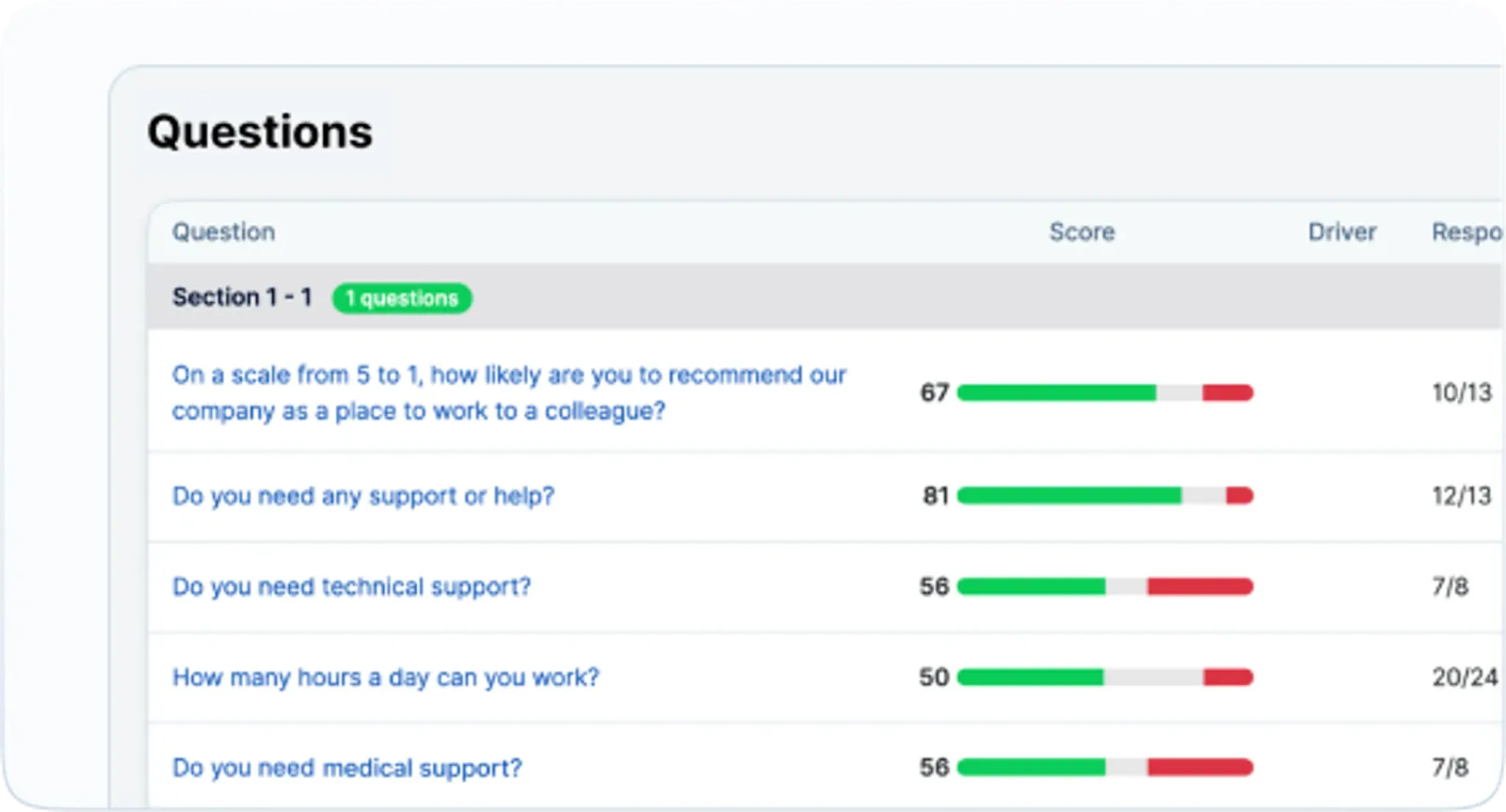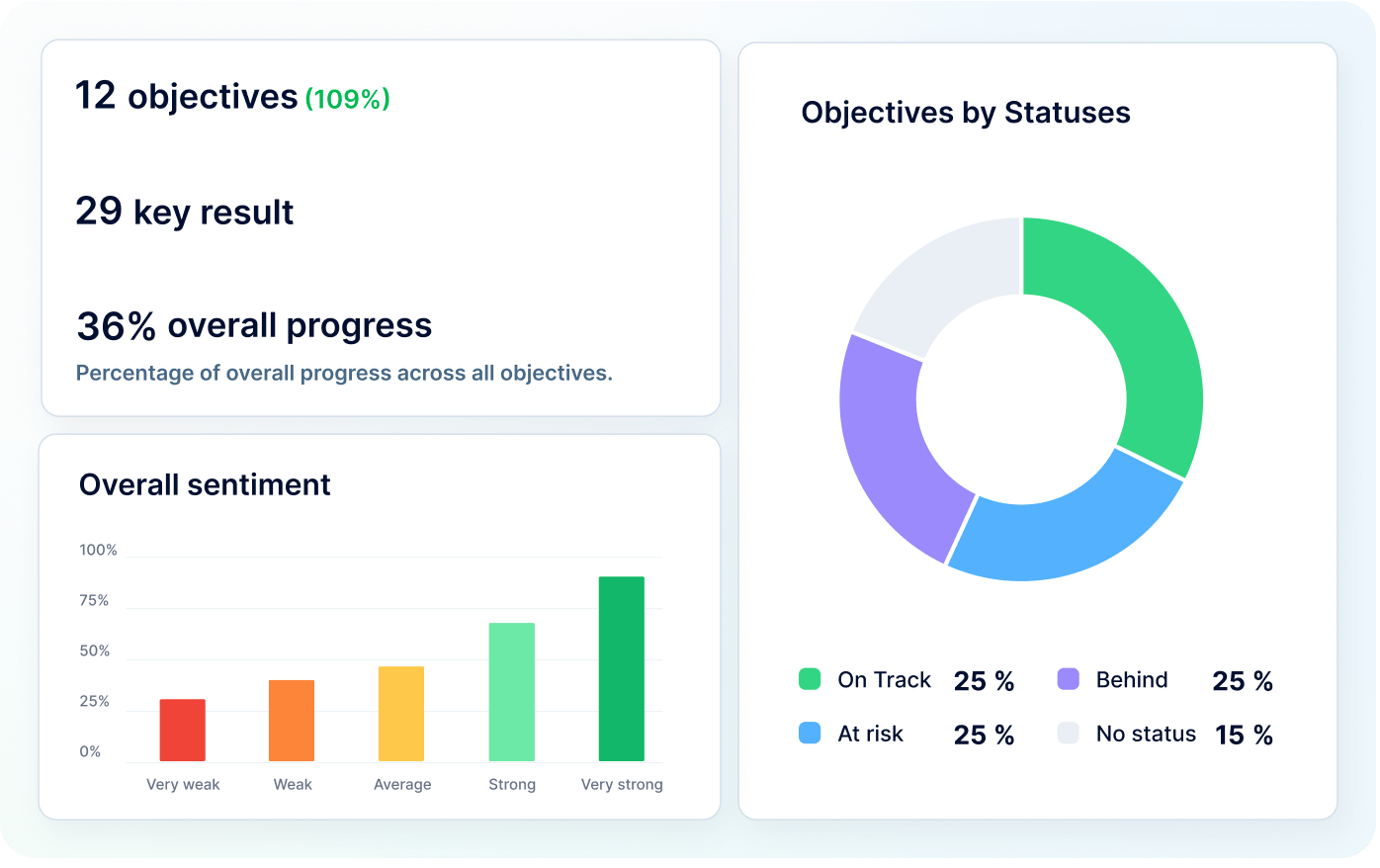
4 Steps to Effectively Manage Stress at Work and 5 Proven Strategies to Improve Focus
Work-related stress is more than just an individual challenge – it poses a real threat to the entire organization. It contributes to increased absenteeism, turnover, and decreased employee engagement, and in the long term, can harm the company's reputation. How can we prevent that? Explore four essential steps to effective stress management in the workplace, and discover five proven strategies that support mental health and focus across your team.
What is Stress?
According to the World Health Organization, stress is the body’s response to a stressor – an event that disrupts internal balance and activates adaptive mechanisms: physiological, psychological, and behavioral. These mechanisms aim to restore internal balance. Stressors can be both physical (e.g., illness, noise) and social (e.g., the birth of a child, loss of a loved one).
Stress triggers chemical changes in the body that raise blood pressure, accelerate heart rate, and increase blood sugar levels. It can also lead to frustration, anxiety, anger, or depression. While moderate stress (eustress) can be motivating and boost performance, when it becomes intense, prolonged, and the individual lacks opportunities for recovery, it turns into distress – negatively affecting both mental and physical health.
What is Workplace Stress?
Workplace stress occurs when job demands exceed an employee's physical or psychological capacity. Sometimes it manifests subtly – through quiet exhaustion that slowly affects engagement and well-being. Other times, it erupts more visibly – as emotional outbursts, irritability, crying, poor concentration, or sudden drops in performance.
According to Gallup’s State of the Global Workplace 2024, 41% of employees report experiencing high levels of stress at work. Perceived stress varies significantly between individuals, with identical workplace situations affecting employees differently based on their personal coping mechanisms.

source: Gallup – „State of the Global Workplace: 2024 Report”
Common Causes of Work-Related Stress
Sources of workplace stress vary. What energizes one employee might overwhelm another. Stress isn’t always rooted in the objective nature of work, but often stems from how individuals perceive situations and their ability to manage them. Recent studies identify the following top contributors to workplace stress:
- Excessive workload or unrealistic expectations – Employees increasingly face overwhelming responsibilities, unrealistic deadlines, and rising work demands. The constant pressure can lead to overload, fatigue, and decreased work performance.
- Lack of work-life balance – Inflexible schedules, long hours and high professional demands combined with personal responsibilities make balance difficult, leading to chronic stress. In a survey by Mental Health UK, 54% of respondents said growing workloads and task volumes caused them stress and possibly burnout, with another 45% reporting unpaid overtime as a significant stressor. Research shows that workplace stress also negatively affects personal life, creating tension that extends beyond working hours and strains relationships with family members.

source: Mental Health UK – „The Burnout Report 2024”
- Limited opportunities for growth or advancement – When effort goes unrecognized or unrewarded, frustration and disengagement grow. Monotonous tasks, unclear career paths, and a lack of professional development opportunities create stagnation. Comparing one’s progress to peers in other organizations can worsen this feeling.
- Lack of support – Inadequate backing from managers or colleagues can lead to feelings of isolation, insecurity, and added pressure. Employees left on their own are more prone to burnout. Gallup found that employees in poorly managed organizations are nearly 60% more stressed than those in well-managed ones – and are even 30% more stressed than unemployed individuals.
- Job insecurity – Fear of layoffs, management changes, or rumors of restructuring all increase anxiety.
- Constant change and instability – Even necessary organizational changes can disrupt a sense of security and increase tension.
- Unclear expectations or roles – Vague responsibilities and goals cause confusion and anxiety about one's position.
- Too many meetings – Frequent, ineffective meetings (which could be replaced by a single email) waste time, cause frustration, and heighten stress.
The Effects of Work-Related Stress
Both employees and the organization feel the consequences of chronic stress. Common outcomes include:
❌ Decreased Employee Engagement
Stressed employees often lose motivation and satisfaction in their work. They tend to withdraw from initiatives, avoid taking ownership, and limit themselves to minimum responsibilities.
❌ Lower Productivity and Performance
Stress impairs cognitive function, weakens focus, and hinders decision-making. Overwhelmed employees make more mistakes, struggle with task organization, and show reduced creativity. This hurts operational efficiency and can ultimately affect financial results.
❌ Decline in Customer Service Quality
Stressed employees may be less patient and less engaged in customer interactions. Time pressure and mental overload impair empathy and communication, leading to a rise in complaints and potential trust erosion.
❌ Increased Absenteeism
Excessive stress harms both mental and physical health, leading to more sick days. A high absenteeism rate burdens the rest of the team and disrupts workflow.
Furthermore, The Royal Society for the Prevention of Accidents notes that stress increases the likelihood of workplace errors and accidents.
❌ Employee Turnover
Long-term exposure to stress pushes employees to leave, searching for better conditions. High turnover results in recruiting costs, onboarding delays, and loss of institutional knowledge – impacting morale and overburdening remaining staff.
❌ Employer Brand Damage
Employees who speak negatively about their work experience or publicly describe the harmful impact of their job on their mental and physical health pose a serious threat to employer branding. Opinions shared on social media, recruitment platforms, or during industry conversations can quickly gain traction and significantly influence how the company is perceived as an employer. As a result, they may effectively discourage potential candidates from applying for positions within the organization.
Negative feedback from current and former employees is also often taken into account by clients, business partners, and investors – demonstrating that the impact of workplace stress goes beyond the HR domain and can directly damage the reputation of the entire organization.
4 Key Steps to Managing Stress in the Workplace
Managing workplace stress requires a systemic, proactive approach grounded in awareness of employee needs. It’s not about reacting to crises – it's about prevention. These four steps can help foster well-being and build resilience across your organization:
Step 1: Recognize early signs of stress and mental health issues
Early detection is critical. The first warning signs may be subtle: declining engagement, increasing errors, irritability. Over time, stressed individuals may feel physical exhaustion, guilt over decreased output, and withdraw socially – signaling a sharp drop in performance.
HR professionals and leaders must do more than observe. They should create safe spaces for conversations about mental health. Use regular 1:1s, pulse surveys, satisfaction check-ins, or anonymous feedback forms to spot red flags and intervene early.

Use PeopleForce to organize regular 1:1 meetings
Step 2: Build a supportive work environment
The workplace atmosphere greatly influences how employees manage stress. Clear expectations, leader availability, a culture of trust and open communication – all reduce pressure.
A supportive environment doesn’t punish mistakes but treats them as learning opportunities. Constructive feedback and celebrating even small wins build psychological safety, which lowers stress and promotes career development.
Step 3: Provide stress management training
Education is a powerful tool for prevention. Offer training on stress management, emotional resilience, energy management, or work-life balance. These programs help employees understand their reactions and equip them with practical tools for daily life.
Make training accessible to all roles and teams. A great option is to offer workshops led by psychologists or trainers who specialize in work stress. These sessions should focus on hands-on exercises and practical solutions that employees can implement immediately after the training.
Step 4: Promote well-being and flexible work arrangements
According to the 2024 American Psychological Association survey, 33% of employees feel they lack the flexibility needed to maintain work-life balance. 45% work more hours than they'd like – rising to 57% for employees with cognitive, emotional, or psychological conditions. Only 60% feel their time off is respected.
Flexible work arrangements are one of the most effective tools for combating stress. Remote or hybrid options, flexible hours, and extra leave days help employees recover and maintain physical and mental health. Build a culture of well-being through access to mental health care, encouragement of physical activity, rest, and sustainable work rhythms.
5 Proven Strategies to Boost Focus
Promoting focus and reducing stress are vital to a healthy work environment. These five strategies can be implemented today without significant financial investment.
1. Mindfulness and Emotional Regulation Techniques
Mindfulness is the practice of consciously directing attention to the present moment – without judgment, overanalysis, or automatic reactions. When thoughtfully implemented, mindfulness initiatives can deliver tangible benefits for both individual employees and entire teams: reduced tension, improved focus, and greater emotional resilience. From an HR perspective, mindfulness is a powerful complement to a company’s well-being policy and a workplace culture rooted in empathy, awareness, and care for employees' mental health.
Research from Stanford University School of Medicine shows that individuals who regularly practice mindfulness experience up to a 30% reduction in stress symptoms and report a stronger sense of control over their lives. That’s a compelling reason to integrate mindfulness into everyday workflows and team rituals.
Here are a few simple practices you can introduce in your organization – regardless of industry or work model (on-site, hybrid, or remote):
- Conscious breathing (1–2 minutes) – Encourage short breathing breaks, for example, after a high-stress meeting or before starting a new task block.
- Body scan – A technique that helps employees notice tension in their bodies and consciously relax. Just a few minutes can make a difference. Consider introducing this as a weekly wrap-up exercise or during short well-being webinars.
- Mindfulness moments during meetings – A few calm breaths at the start, a minute of silence after an intense workshop, or a brief gratitude exercise to close a project – help teams stay focused and restore balance.
- Mindful screen breaks – Instead of scrolling through a phone, encourage co-workers to take a quick walk, breathe deeply by an open window, or simply look at the greenery outside. These small changes can significantly reduce cognitive overload.
- Mindful coffee or tea breaks – Promote short breaks away from screens, just the beverage and a moment of mindful attention to taste, aroma, and temperature. This kind of reset can be turned into a team ritual: a shared “mindful coffee” moment.
In addition to mindfulness, it’s equally important to build a competency that significantly impacts communication, collaboration, and stress resilience: emotional regulation. This skill involves recognizing, understanding, and consciously responding to emotions. Here are several proven techniques:
- Name It to Tame It – Encourage employees to name their emotions during moments of stress or tension (e.g., “I feel frustrated because the project is stuck,” or “I feel nervous before the presentation”). Simply identifying an emotion can reduce its intensity and help regain control.
- The STOP Model – A mindfulness-based technique that helps restore calm and promote intentional action. It can be used during short self-checks throughout the day or before challenging conversations:
- S – Stop (pause for a moment);
- T – Take a breath (take a slow, deep breath);
- O – Observe (notice what you're thinking and feeling);
- P – Proceed (act with greater awareness).
- Reframing – A cognitive technique for shifting perspective. Instead of thinking, “I’m never going to finish this on time”, an employee can reframe the thought: “This is a tough task, but I have a plan and support”. Reframing lowers stress and fosters flexible thinking under pressure.
- Safe space for conversation – Regular check-ins, well-being sessions, and access to mentors or HR partners help create an environment where employees feel safe discussing emotional challenges. Psychological safety builds trust and prevents tension from escalating within teams.
2. Better Task and Priority Management
Unclear expectations and information overload are among the most common sources of stress in the workplace. A lack of structure, duplicated messages, or vague guidelines make it harder for employees to focus and often lead to frustration. Well-organized task management – supported by the right HR tools – helps teams regain control and significantly improves overall efficiency. Here are several strategies worth implementing to bring more structure to daily work:
- Set weekly goals and priorities – Short, regular check-ins help teams understand what truly matters. These sessions can be combined with individual check-ins or project status updates.
- Use scheduling and calendar tools in your HR system – A shared calendar within the HR platform enables employees to easily track scheduled activities, deadlines, and tasks assigned to other team members. This ensures everyone stays aligned and informed.
- Automate reminders – Automated reminders for tasks, deadlines, or responsibilities support employee autonomy and reduce pressure from managers. This is especially helpful in distributed teams or asynchronous work environments.
- Maintain an up-to-date knowledge base – Providing access to internal resources – such as policies, manuals, checklists, or onboarding videos – through a centralized knowledge base reduces confusion. Employees don’t need to repeatedly ask basic questions – they can simply consult well-organized materials.
- Introduce elements of gamification – Point systems, team challenges, or badges for completed tasks can boost motivation and make it easier to track progress. Gamification works particularly well in younger teams that value visibility and a sense of impact.
- Standardize communication – Make communication clear and specific. Instead of vague requests like “Please complete ASAP”, try something more actionable: “Please prepare the presentation by Wednesday at 3 PM. I’ve shared the brief in the calendar”.

3. Microbreaks and Conscious Rest
Short breaks – like stepping outside, taking deep breaths, or enjoying a moment of silence – support recovery and employee health during the workday. Combined with mindfulness, microbreaks prevent mental “overheating” and help employees sustain energy and clarity.
4. Team Support and Mentoring
Isolation fuels burnout and disengagement. That’s why a supportive team and approachable leaders are critical. Mentorship programs, Employee Assistance Program (EAP) and buddy systems offer emotional reinforcement during transitions – such as promotions or new projects – and help reduce stress across the board.
5. Identifying and Reducing Stressors in the Workplace
Not all workplace stressors can be eliminated, but many can be identified and minimized. Heavy workloads, meeting overload, noise, unclear instructions, and shifting priorities erode focus and increase anxiety. Even if the effects aren't immediately visible, they compound over time.
Start by gathering employee feedback through short surveys. Sample questions include:
- What most disrupts your focus at work?
- What situations or other factors in your environment cause stress?
- What would improve your comfort and reduce daily stress?
- What helps you cope when you feel overwhelmed or face a stressful situation at work?
- How does work stress affect your home life or free time?
- What time management strategies help you stay on top of your tasks?
- What kind of support do you need when facing a difficult situation at your job?
Insights from these responses can guide meaningful, cost-effective improvements.

Receive feedback and conduct surveys with Pulse
Preventing Stress at Work Is a Shared Responsibility
We can't eliminate stress entirely – it's a natural response to pressure, change, and uncertainty. But instead of chasing a stress-free ideal, we can:
- Teach employees to recognize and manage stress – in themselves and others.
- Create an environment that fosters psychological resilience – not one built on pressure and 24/7 availability.
- Prioritize prevention by ensuring flexibility, effective workflows, and safe spaces for emotional expression.
- Encourage practices that support focus, balance, and physical wellness.
- Implement systems and protocols that minimize unnecessary stress caused by inefficient processes, unclear expectations, or poor communication.
It’s HR’s and leadership’s role to listen proactively and respond before stress escalates into burnout. A supportive work environment built on organizational values of respect and collaboration naturally reduces unnecessary workplace tension.
Workplace Stress: FAQ
Would it be possible to eliminate job stress entirely?
No. Stress is a normal response to challenges such as tight deadlines, organizational changes, and high responsibility. It can’t be fully removed – but it can be managed. Good organization, transparent communication, and a supportive work culture make a big difference. It’s also important to ensure that the workspace is well-designed and properly adjusted to employees’ needs. Environmental research shows that workplace design elements like natural light and comfortable noise levels significantly impact stress levels.
When does workplace stress become dangerous?
Work stress becomes harmful when it is:
- Chronic and long-term;
- Physically debilitating;
- Damaging to focus and decision-making;
- Harmful to relationships;
- Leading to burnout.
Unhealthy coping mechanisms – like substance use, overeating, or compulsive behaviors – may also emerge, further affecting health and performance.
How does long-term stress impact mental health?
Chronic workplace stress poses a serious threat to employees' mental health. It can lead to difficulties with concentration and logical thinking, decreased motivation, irritability, sleep disturbances, anxiety, and in more advanced cases – depression and burnout. Burnout is a state of emotional, physical, and mental exhaustion that develops gradually and can ultimately result in complete withdrawal from professional life. Employees affected by burnout often lose their sense of satisfaction at work, struggle in professional relationships, and increasingly consider leaving the organization.
According to the Psychological Safety in the Changing Workplace report (2024), workers who feel a high level of psychological safety at work are significantly less likely to experience negative effects in their daily professional functioning. For instance, only 27% of them report feeling tension or stress on a typical workday, compared to 61% of those with low psychological safety.
How does long-term stress affect physical health?
Chronic emotional tension affects not only mental health and the nervous system but also the entire body. Stress can cause high blood pressure, increase the risk of heart disease and cardiovascular disease, and even lead to heart attacks. It often results in digestive issues, sleep disturbances, headaches, weakened immunity, and chronic pain in muscles and joints. A weakened body becomes more susceptible to infections, and the recovery process from illness takes longer. According to research from the National Institute for Occupational Safety and Health and other organizations, workplace stress also significantly increases the risk of musculoskeletal disorders, particularly in the back and upper limbs.
According to the Workforce State of Mind report, 77% of employees say stress negatively impacts their physical health.
Get started with PeopleForce today
Automate your HR routine to create a high performance culture in your company. PeopleForce is your best HRM alternative to stay business driven but people focused.

Recent articles
How to Ace Your First Day on the Job – 10 Tips for a Successful Start
Nail your first day at work with these 10 expert tips to boost confidence, impress your team, and start your new job on the right foot.
Mastering Individual Development Plans: a complete guide for HR managers
A comprehensive guide to creating and managing Individual Development Plans, helping HR managers effectively develop talent, boost employee motivation, and achieve business goals.
10 essential HR solutions for common startup challenges
Discover the top 10 HR challenges startups face and practical solutions to overcome them so your startup can thrive and grow efficiently.

